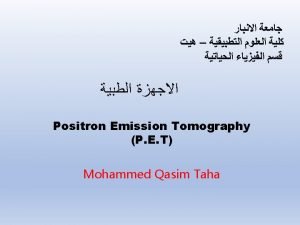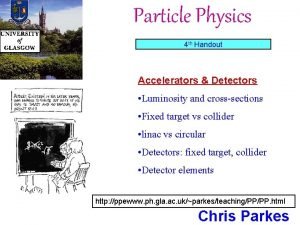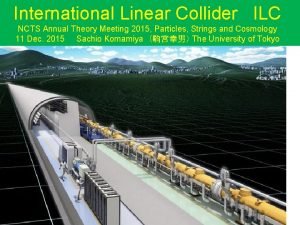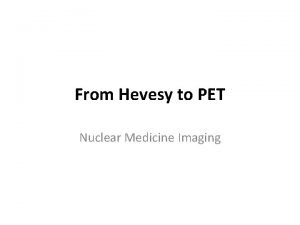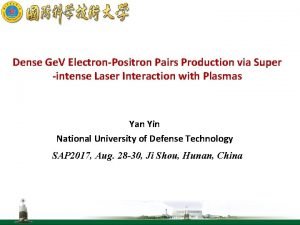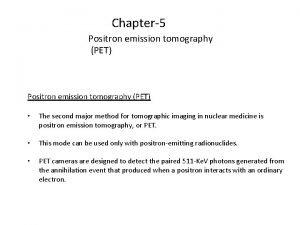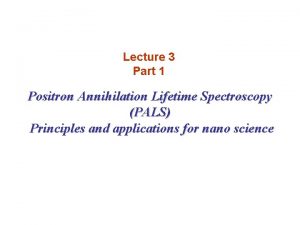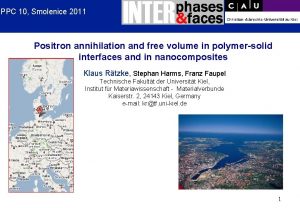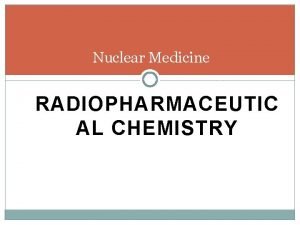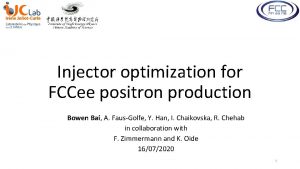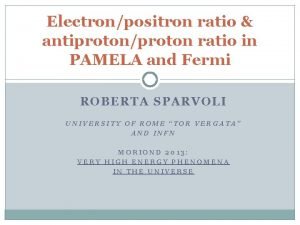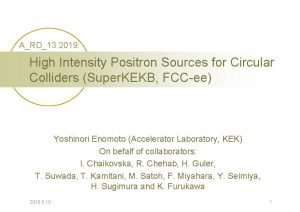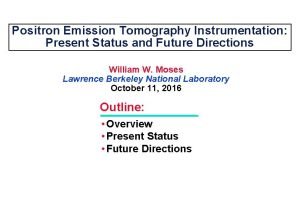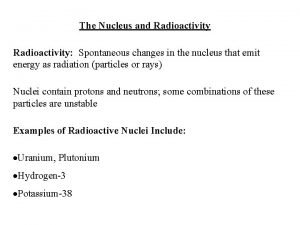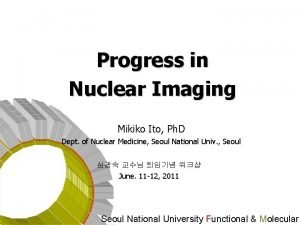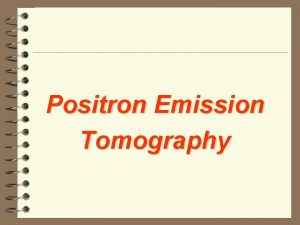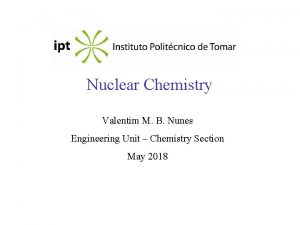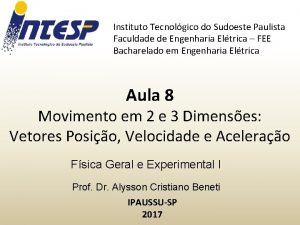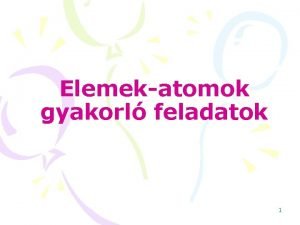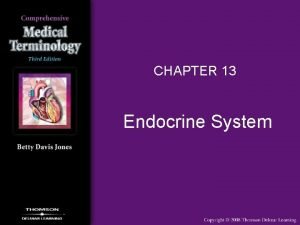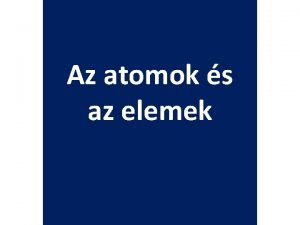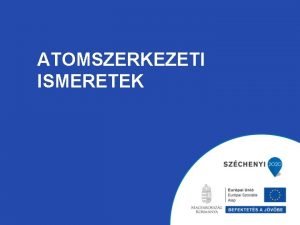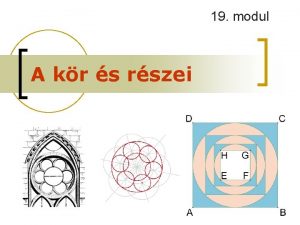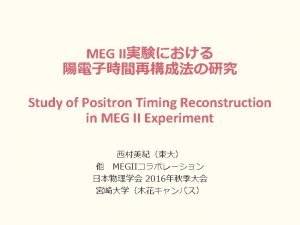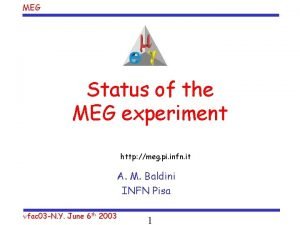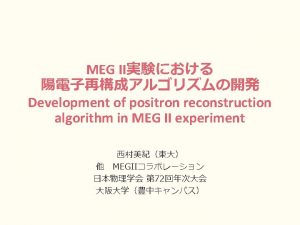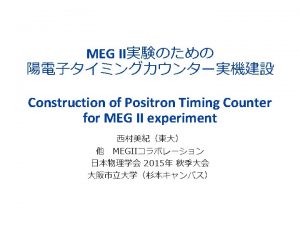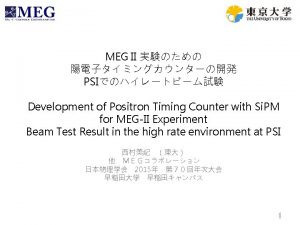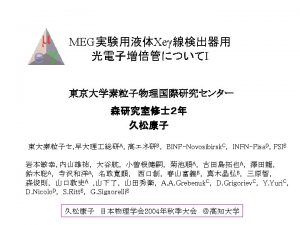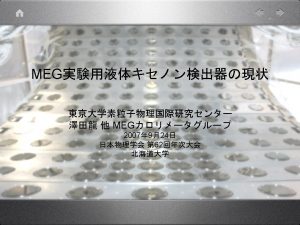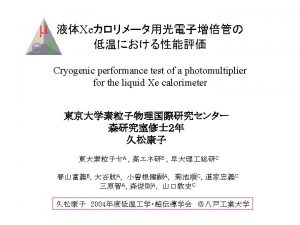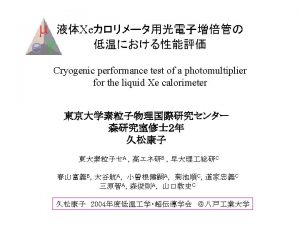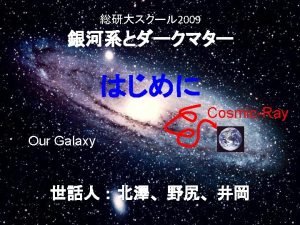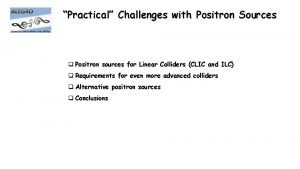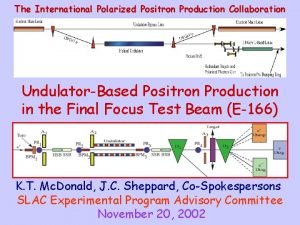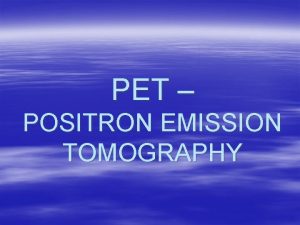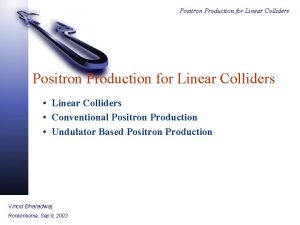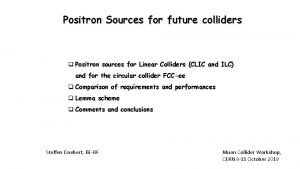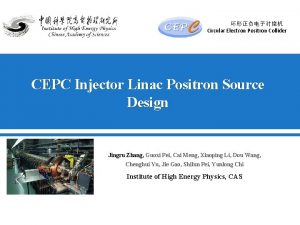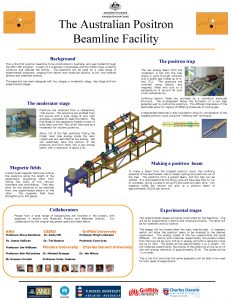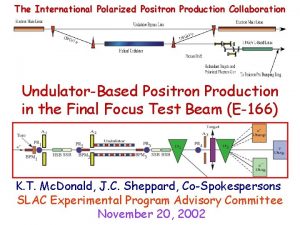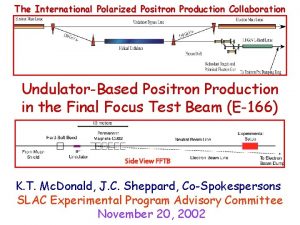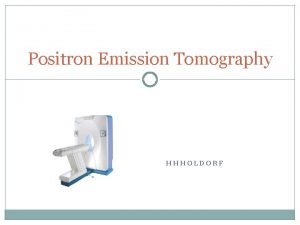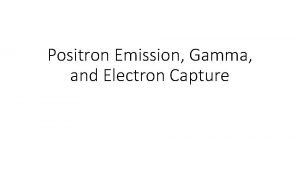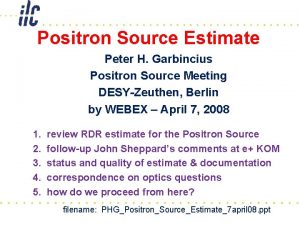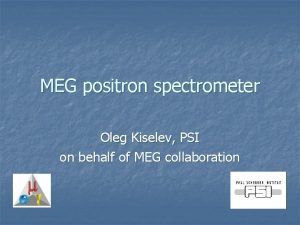Content Introduction of the MEG II Experiment Positron






























- Slides: 30


Content • Introduction of the MEG II Experiment • Positron Spectrometer • Positron Time Reconstruction • TC Tracking • Prospect and Summary 2

3 MEG II Motivation • Simplest Little Higgs Model (ar. Xiv: 1610. 01266 v 2) MEGII MEG

4 MEG II Requirement Signal: two-body decay • 52. 8 Me. V • Opening Angle 180° • Time Coincident Dominant BG: accidental • <52. 8 Me. V • Any angle • Time Random 105. 6 Me. V Precise measurement of emission angle, energy, and timing of both positron and γ is essential. ⇒ Today’s topic is performance of positrons time reconstruction.

5 Liquid Xenon Gamma-ray Detector Superconducting Magnet Gamma-ray Positron Muon Wire Drift Chamber Pixelated Positron Timing Counter Radiative Decay Counter 5

Positron Spectrometer 6 Liquid Xenon Gamma-ray Detector Superconducting Magnet Gamma-ray Positron 1 st turn Positron Muon Wire Drift Chamber Positron 2 nd turn Pixelated Positron Timing Counter Radiative Decay Counter 6

77 Positron Measurement Wire Drift Chamber (DCH) • Single volume, low-Z gas mixture (He: i. C 4 H 10 = 85: 15) • • 1200 sense wires (2 m long, 20 μm diameter) Stereo angle (7°) configuration Pixelated Positron Timing Counter (TC) • 512 fast plastic scintillator counters (120 x 40/50 x 5 mm 3) • 6 Si. PMs (Advan. Si. D) are attached on both side of the counters. Single counter 256 counters for down stream DCH reconstructs TC reconstructs ü Momentum and vertex ü Positron passing time through each counter ü Track length from vertex to TC Reconstruct positrons in each detector, then check matching

Performance Study with MC 8 • Check the performance of positron spectrometer in detail with full analysis chain of the positron reconstruction. • Set up • • Geant 4 Signal positron mixed Michel positron @ 7 x 107 TC: Hit smeared by their resolutions (TC Waveform simulation study Usami’s talk 20 a. A 12 -1) DCH: waveform simulation In this talk we’ll focus on timing reconstruction.

Positron Timing Reconstruction An example with signal event (w/o pile up) ― MC track ― propagated track … DCH Reconstructed hits DCH region TC region X-Y Measured time by ith counter Path length from a first counter to ith counter TC first hit 9

Positron Timing Reconstruction 10 An example with signal event (w/o pile up) T 1 T 2 Ti Measured time by ith counter Z-Phi (w/ TC) ― propagated track ★ TC first hit TC hit counter Path length from a first counter to ith counter

11 Time Resolution from Each Detector 1. Flight Time b/w Target and TC 2. Time Resolutions in TC σTC 31. 0 ps σL 14. 8 ps • Resolution coming from Track reconstruction is 14. 8 ps. (75 ps in MEG) • TC resolution is 31. 0 ps. (76 ps in MEG)

Overall Positron Time Resolution σ = 39. 5 ps • Overall positron time resolution is 40 ps. (It was 108 ps in the MEG experiment. ) 12

More Development 1 3

Effect of Multiple Scattering in TC 14 Track reconstructed by DCH TC True Track TC σTC 31. 0 ps σTC 27. 0 ps The effect of multiple scattering in TC is not so large, but if we’ll estimate them more accurate the time resolution should be better.

15 TC Tracking T 1 T 2 Ti t 1 t 2 • Motivation is more precise estimation of path length in TC. • TC reconstructs hit position along length. • GENFIT: DAF(Deterministic Annealing Filter) is used. • It is almost Kalman Filter but with reweighted measurements against outlier hypothesis. • Initial information is a track reconstructed by DCH.

Hit Position Resolution 16 TC tracking recovers the effects of multiple scattering.

17 Time of Flight in TC However reconstructed path length does not change so much. GENFIT does not have time fit. More development is need.

Impact on Time Resolution 18 In this time, time resolution does not improve so much, because calculation of path length does not improve.

Summary • 19

Back Up 2 0

Mix overall resolutions 21

Positron Detection Efficiency Preliminary • Overall Efficiency: 71. 1 % • DCH Efficiency: 81. 0 % • Propagation miss to TC (Dominant ~50 %) • Contamination • Vertex reconstruction miss • TC Efficiency: 90. 6 % • No Hit (9. 2 %) • Clustering contamination > 40% in a cluster (the rest) • Matching Inefficiency (if both reconstruction is succeeded): 7. 6 % • in the same turn (20. 9 %) • Turn difference is just 1. (58. 1 %) 22 6 % in matching inefficiency

Positron Reconstruction Chain TC • WF analysis • Hit Rec. • Clustering DCH • WF analysis • Hit Rec. • Track finder • Kalman Fit Matching • Propagation to TC • b/w TC cluster and DCH track Previous JPS • TC is pixelated by 512 scintillator counters. • Positron comes to the TC in high rate. (a few MHz in the TC region. ) → Clustering of TC hits was developed. Counters * Hits DCH is tracking just before TC. cluster 23

Positron Reconstruction Chain TC • WF analysis • Hit Rec. • Clustering DCH • WF analysis • Hit Rec. • Track finder • Kalman Fit Matching Check this difference Reconstructed position in TC Propagated Track from DCH • Propagation to TC • b/w TC cluster and DCH track 24

25 Time of Flight b/w Target and TC Time Resolutions in TC w/o Michel e+ w/ Michel e+ Tails are almost the same. These tails come from signal itself. Multi turn or delta ray may be the reason. w/o Michel e+ w/ Michel e+

26 Tail events from multi turn • Tail in events come from hits from different turns of the same positron. • They affect final time measurement. • These kind of hits should be separated by • Tracking • More precise cut in clustering 2 nd turn 1 st turn 2 nd turn < 1 st turn

27 Time Resolution from Each Detector Time of Flight b/w Target and TC Mean 8. 3 psec Sigma 14. 8 psec Time Resolutions in TC Mean 4. 5 psec Sigma 31. 0 psec Since these two reconstructions does not have correlation, .

28 Hit Position Reconstructed position – mc position R Std Dev 1. 5 → 0. 6 R cm Counter local cm

29 Hit Position Reconstruction R Z cm φ cm L rad cm

30 Prospects t 1 t 2 • Weighted hit time by reconstructed hit position • Closer channel should have larger light amount than the other channel have. • Contamination cut
 Positron emission
Positron emission Positron vs proton
Positron vs proton Positron vs proton
Positron vs proton Researchgate
Researchgate Positron vs electron
Positron vs electron Positron symbol
Positron symbol Positron annihilation spectroscopy ppt
Positron annihilation spectroscopy ppt Positron emission tomography
Positron emission tomography Positron yacht
Positron yacht Positron emission tomography
Positron emission tomography Positron
Positron Cirelli
Cirelli Positron
Positron Positron
Positron Positron emission
Positron emission Cobalt-60 beta decay equation
Cobalt-60 beta decay equation Positron emission tomography
Positron emission tomography Positron emission tomography
Positron emission tomography Alpha particle charge
Alpha particle charge Um coelho atravessa um estacionamento
Um coelho atravessa um estacionamento Carrier content vs real content
Carrier content vs real content Dynamic content vs static content
Dynamic content vs static content Meg hourihan
Meg hourihan Meg whitman biography
Meg whitman biography Meg stone etsu
Meg stone etsu Kundrinori i zhdrejte me parafjale
Kundrinori i zhdrejte me parafjale Thigh royd
Thigh royd Eeg for dummies
Eeg for dummies Elektronhéjak
Elektronhéjak Száma az atom minőségét szabja meg
Száma az atom minőségét szabja meg Körív területe
Körív területe
